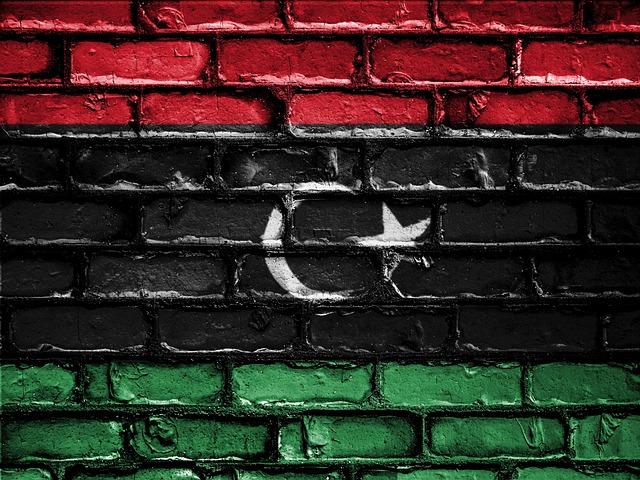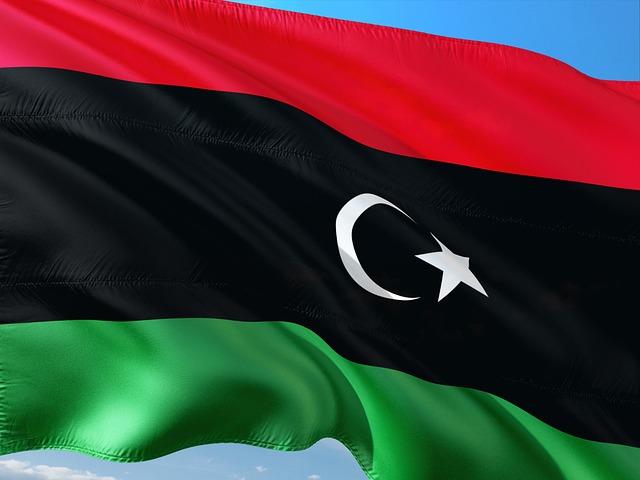The End of Libya’s False Stability Period: A new Chapter Unfolds
In the complex tapestry of North African geopolitics, Libya has long epitomized the fragile balance between stability adn chaos. After years of strife following the ousting of Muammar Gaddafi in 2011, the country seemed to slip into a precarious equilibrium—a situation often described as a “false stability.” However, recent developments indicate that this veneer of calm is beginning to crack, exposing the underlying tensions that threaten to unravel the tenuous order. In this article, we explore the factors contributing to the end of Libya’s illusory stability, examining the implications for its governance, regional security, and international diplomacy. As the nation grapples with internal divisions and external pressures, the prospects for sustained peace and progress appear more uncertain than ever. The need for a concerted and informed response to Libya’s evolving situation is critical not only for its own future but for the broader stability of the region.
The Emergence of Political Fragmentation in Libya

The ongoing turmoil in Libya has given rise to a important shift in the political landscape, marked by the disintegration of previously stable structures. As rival factions vie for power, the dramatic decline in unity is evident in various spheres, including governance, military control, and social cohesion. Key factors contributing to this fragmentation include:
- The struggle for power: Multiple factions,each with their own agendas and external backing,are scrambling to assert dominance.
- economic collapse: crippling economic conditions fuel discontent and rivalries among different regions and tribes.
- External influences: Foreign interventions exacerbate existing divisions, as global powers support their preferred factions.
- Loss of security: The weakening of national institutions has led to heightened lawlessness and the proliferation of armed groups.
This fragmentation has also precipitated a complex humanitarian crisis, with millions displaced and living in precarious conditions. The political landscape is now starkly defined by competing interests rather than a unified vision for the country’s future.A closer look at the various factions involved reveals a landscape riddled with challenges:
| Faction | Leader | Key Supporters | Control Area |
|---|---|---|---|
| Libyan National Army (LNA) | Khalifa Haftar | Egypt, UAE | Eastern Libya |
| Government of National Unity (GNU) | Abdul Hamid Dbeibeh | turkey, Qatar | Western Libya |
| Misrata Brigades | various leaders | Autonomous | Misrata Region |
As the struggle for control continues, the very fabric of Libyan society faces potential fragmentation along tribal and regional lines, complicating any efforts at reconciliation or stabilization. The illusion of stability that onc characterized Libya is giving way to a more chaotic and fragmented reality, igniting concerns about the nation’s future and the well-being of its citizens.
Economic Consequences of the Diminishing Stability

The declining stability in Libya brings with it a host of economic repercussions that threaten the already fragile structure of the nation’s economy. An immediate result is the disruption of existing supply chains, which had previously managed to sustain some degree of normalcy despite the chaotic political landscape. With insecurity escalating, businesses find it increasingly challenging to operate, leading to higher unemployment rates and a significant decline in local production. This situation is exacerbated by the uncertainty surrounding foreign investments, which are crucial for economic recovery and advancement in the post-revolutionary period.
Moreover, the diminishing stability contributes to rising inflation and currency depreciation, further straining the purchasing power of the Libyan population. Key sectors such as oil and gas, which are the lifeblood of Libya’s economy, face risks of operational interruptions. The following factors highlight the critical areas of concern:
- Increased unemployment: Many businesses have shut down or reduced their workforce.
- Inflation rate: Consumer prices for basic goods and services are rising sharply.
- foreign investment: Investors are retreating due to security concerns.
To illustrate the economic landscape, the table below summarizes recent economic indicators:
| Indicator | Value | Change (%) |
|---|---|---|
| Unemployment Rate | 30% | +5% |
| Inflation Rate | 20% | +10% |
| Foreign Investment | $500M | -15% |
The combination of thes factors creates a daunting scenario for the Libyan economy, where social cohesion and stability are increasingly at risk, compelling both local leaders and international stakeholders to rethink their approaches to restoring stability and fostering economic growth.
The Role of Foreign Interventions in Libya’s Crisis

The trajectory of Libya’s ongoing crisis has been heavily influenced by foreign interventions that have shaped the political landscape since the 2011 uprising. External actors, motivated by a combination of strategic interests and ideological support, have intervened in various forms, leading to a complex web of alliances and hostilities. The involvement of countries such as Turkey, Russia, and various European nations has exacerbated the conflict, creating proxy battles that complicate internal politics. these interventions have often prioritized national security concerns and economic interests over the long-term stability of Libya, proving to be hinderances rather than solutions in achieving lasting peace.
Key interventions have included:
- Military Assistance: Nations like Turkey have provided militia groups with weapons and training,shifting the balance of power significantly.
- Diplomatic Maneuvering: Countries such as France and Italy have attempted to broker peace agreements, often favoring factions that align with their geopolitical aims.
- Economic Exploitation: External powers have sought lucrative oil contracts, further complicating the recovery of Libya’s economy.
| Country | Type of Intervention |
|---|---|
| Turkey | Military support to the Government of National Accord |
| Russia | Support for Eastern-based factions through military contractors |
| France | Diplomatic support and arms sales |
The result is a fragmented political environment where multiple external influences vie for control, leaving Libyans to navigate an unstable reality marked by shifting loyalties. As foreign players continue to assert their interests, the path to genuine national reconciliation becomes increasingly murky.This trend raises pressing questions about the sovereignty of Libyan governance and the implications for future stability in the region.
Civil Society’s Response to Renewed Turmoil

As Libya once again finds itself grappling with political chaos, civil society organizations have stepped up their efforts to foster dialogue and promote stability amidst the upheaval. These groups are not only advocating for immediate humanitarian assistance but also focusing on long-term solutions to address the roots of the discontent. Their initiatives are diverse, reflecting the complex fabric of Libyan society, and include:
- Community Engagement: Local organizations are facilitating town hall meetings to give citizens a platform to voice their concerns and aspirations.
- Peacebuilding Workshops: Workshops across various regions are educating members on conflict resolution and negotiation skills.
- Advocacy for Policy Change: Activists are working tirelessly to push the transitional government to prioritize reforms that address economic grievances, particularly among marginalized communities.
Moreover, the digital space has become a vital arena for civil society’s activism. Organizations are leveraging social media to raise awareness, mobilize support, and document human rights abuses, aiming to keep international attention focused on Libya’s predicament. An emerging trend noted among these groups is:
| Trend | Description |
|---|---|
| Grassroots Campaigns | Local movements are gathering momentum, emphasizing direct action and local solutions. |
| Collaboration Across Sectors | Partnerships with international NGOs are enhancing resources and expertise for effective interventions. |
Strategic Recommendations for International Engagement in libya

To navigate the emerging complexities in Libya post-stability, international stakeholders should consider a multi-faceted approach that prioritizes dialogue and cooperation. Engagement with diverse local entities is essential to foster an inclusive political environment. This can be achieved through:
- Establishing regular dialogue channels with civil society groups to better understand grassroots needs.
- Facilitating inclusive dialogue between various political factions to promote reconciliation.
- Supporting local governance initiatives that empower communities and enhance public services.
Additionally,leveraging economic and developmental interventions can help stabilize the region while addressing humanitarian needs. International investments should focus on key sectors such as infrastructure and healthcare.Stakeholders could also consider:
- Creating joint ventures with local firms to boost job creation and entrepreneurship.
- Partnering with international organizations to deliver assistance and training programs in essential services.
- Implementing obvious governance frameworks to ensure that aid distribution is equitable and effective.
The Path Forward: Rebuilding Trust and Institutions in Libya

the recent upheavals in Libya mark a pivotal moment for the nation, urging a comprehensive reassessment of governance and accountability. To pave the way for meaningful reconstruction, it is indeed essential to focus on the reinforcement of democratic institutions and the restoration of public faith in government mechanisms. Key strategies should include:
- Community Engagement: Encouraging grassroots participation in political and decision-making processes.
- Judicial Reforms: Implementing a transparent legal framework that ensures justice and reinforces the rule of law.
- Anti-Corruption Measures: Establishing independent agencies dedicated to tackling corruption at all levels of government.
Moreover, rebuilding trust will necessitate a concerted effort to address the deep-seated grievances that continue to divide the population. Creating platforms for dialogue will allow diverse voices to be heard and foster a sense of national unity. initiatives such as:
- Educational Reform: Incorporating civic education into school curriculums to instill democratic values in future generations.
- Media Freedom: Supporting independent journalism that can investigate and report on issues without fear of reprisal.
- International Collaboration: Seeking partnerships with global organizations to provide resources and expertise in governance.
In Summary
the end of Libya’s false stability period marks a pivotal moment in the nation’s turbulent history. As various factions and external actors vie for influence, it becomes increasingly clear that the path forward will require not only political reconciliation but also a robust commitment to rebuilding governance structures and fostering genuine economic development. The suspension of the fragile equilibrium, previously maintained through a web of expedient agreements, signals potential instability that could lead to renewed conflict or, conversely, an possibility for genuine reform and national unity. Observers must remain vigilant as Libya navigates this volatile new chapter, with the stakes higher than ever for its citizens and the broader region. The world will be watching closely, hoping for a resolution that prioritizes peace, stability, and a brighter future for all Libyans.







